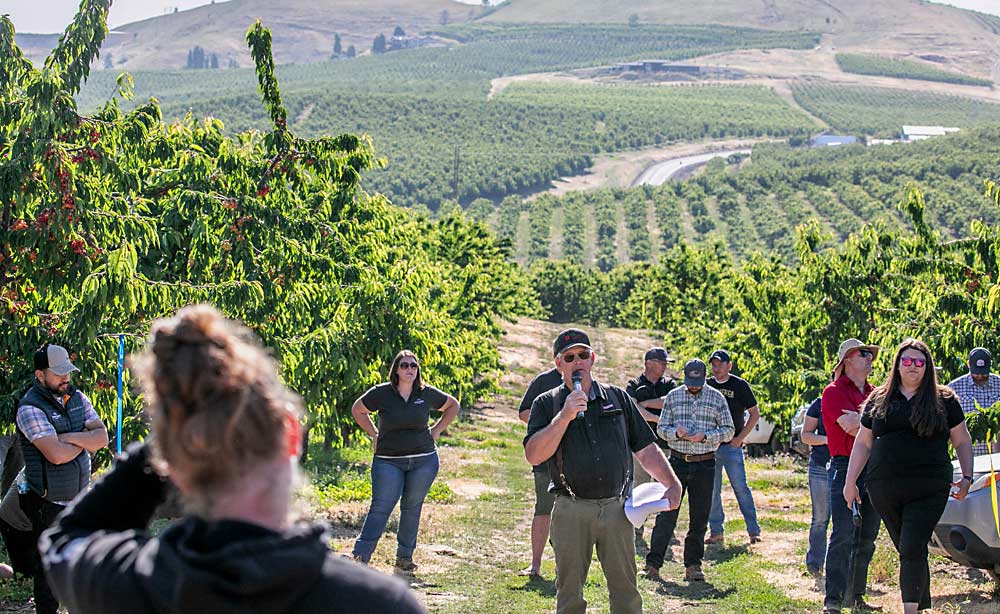
A few dozen growers learned about quirks of growing Pearl series cherries, cherry breeding and leafhopper research on June 6 at Oregon State University’s annual preharvest cherry tour in The Dalles.
Organized by Ashley Thompson, tree fruit extension specialist, the tour visited Polehn Farms to check out Black Pearl, Ebony Pearl and Burgundy Pearl cherries, all bred by Cornell University and favored for early harvest. Black Pearl is by far the most popular.
Ken Polehn, third-generation owner of the orchard company, told the growers Black Pearl cherries often fool him, looking as if they will not reach adequate size. But they always do in the last week or so before harvest, he said.
“So don’t panic,” he said.
Ebony Pearl produces large cherries, most of them 9- or 10-row size, but has trouble with dropping fruit, he said. Polehn is undecided on Burgundy Pearl, which so far has not been as firm or large as he would like, but the fruit has good flavor, he said.
Washington State University cherry breeder Per McCord told growers that two cherry selections, R-3 and R-19, have reached Phase 3 commercial trials and will produce fruit this year. A third Phase 3 selection, R-29, will have to wait another year for fruit, he said.
McCord is based at WSU’s Irrigated Agriculture Research and Extension Center in Prosser, but he has some Phase 2 trials at the OSU Mid-Columbia Agricultural Research and Extension Center in Hood River. He invited growers to field days at both facilities — June 30 for IAREC, which will include a glimpse of the center’s new optical sorter cherry packing line; July 5 for MCAREC.
Also at Polehn Farms, growers took a look at samples of fungal cankers showing up in the area.
At Orchard View Farms, the tour’s second stop, OSU entomologist Chris Adams described how he will participate in research into the migration habits of leafhopper, a vector for X disease. Adams is based at MCAREC.
Andony Melathopoulos, also an OSU entomologist, told growers that cherry cover crops do a lot to augment the habitat of native pollinators, which is great for them and the environment, but don’t expect them to boost your cherry pollination. They just don’t like cherry blooms that much, he said.
Other speakers on the tours included representatives from the U.S. Department of Agriculture Risk Management Agency and a Columbia Gorge public transportation service.
—by Ross Courtney






Leave A Comment